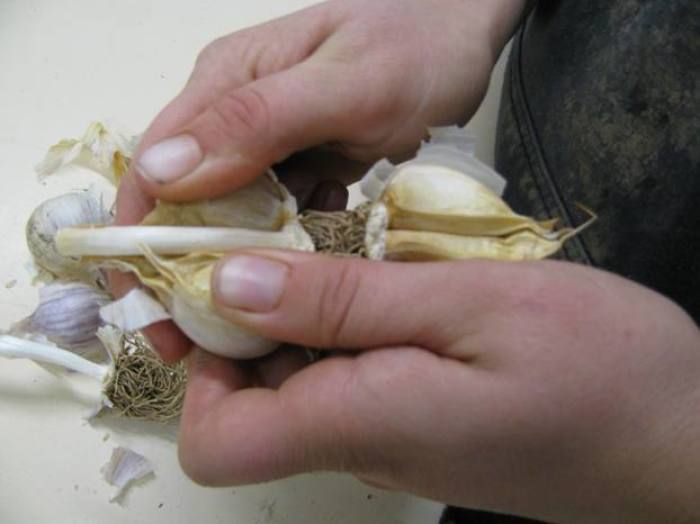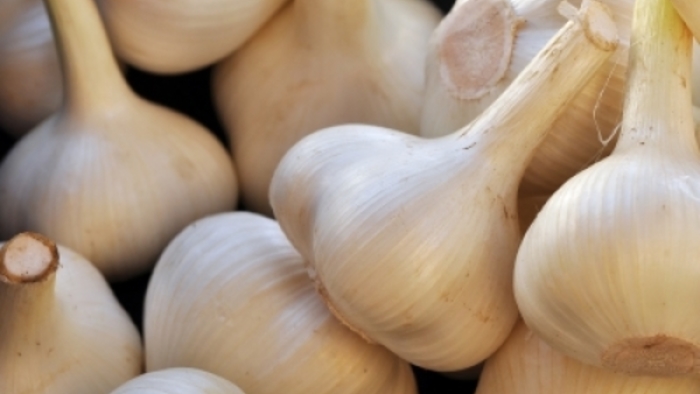
“Do not eat garlic or onions; for their smell will reveal that you are a peasant.” Cervantes in Don Quixote.
Today, the once lowly garlic has found its way into kitchens everywhere because of the flavor it adds to food.
It wasn’t always so. Garlic used to be only found only in “exotic” cuisine (think Mediterranean or Asian), and seldom appeared in most middle class American homes in the 1950’s and 1960’s.
But that has all changed. Just check out the Food Channel and you will find every kind of cooking show starting off with its most important ingredient – garlic. And what most people don’t know is that garlic is very easy to grow.
Peter Henderson, the great-great grandfather of truck farming in America, wrote of garlic in Gardening for Profit in 1867, “It is of the easiest culture, growing freely on any soil suitable for Onions.”
Garlic is the last vegetable we plant every year and one of the first to be harvested in the summer. At Heritage Farm this week, both commercial and preservation staffs are splitting open garlic heads in preparation for planting. These cloves were harvested only a few months ago, and as other gardens are being put to bed for the winter, the garlic beds are being prepped for planting.
Cultivated garlic varieties do not produce seed. Consequently, garlic depends on humans to clone it by planting its cloves. The preservation staff is planting somewhere between 6000 and 9000 cloves – approximately 20 to 30 cloves each of 310 different garlic varieties for our collection. Meanwhile, the commercial crew will plant out 60,000 cloves consisting of 16 different varieties for our seed catalog.
So, before you stow those garden tools for the winter, take some garlic planting advice from one of our garlic growers here:
- Around here, October is usually the best month for planting garlic. You should aim to plant when the soil temperature is around 60 degrees Fahrenheit.
- To grow large bulbs of garlic, plant the biggest cloves. When you are ready to plant, separate the cloves from the bulb, leaving the outer skin on the bulb.
- Plant the cloves root end down, 6-8” apart, in rows spaced 10-12” apart. Cover with 2” of soil and a 4-6” layer of mulch, such as leaves or straw. The mulch allows for gradual freezing and thawing, as the frequent freeze and thaw cycle in spring and fall can be damaging to garlic. You can just leave the mulch on in spring; it will help control weeds, retain moisture and provide nutrients as it decomposes.
- Cloves will begin to sprout in 2-4 weeks, with around 6” of root, depending upon the variety and the weather conditions. Don’t worry, the mulch should protect the plants from frost or a freeze but they will survive through the winter.
And then you’re done! At least for the winter…The garlic will start growing again in early spring. Keep your garlic beds weeded and if you planted hard neck varieties cut the scapes, those long curly stems that grow above ground, when they are about 6 inches long (but don’t forget to save them for stir-fry, salads and pickling!). Depending on where you live and the weather, garlic will be ready for harvest sometime between late June and early August (see our garlic harvesting blog).
By then you will be ready to start the process all over again. And Don Quixote aside, happy eating.


















Comments
Log in or create an account to post a comment.
Sign up Log in